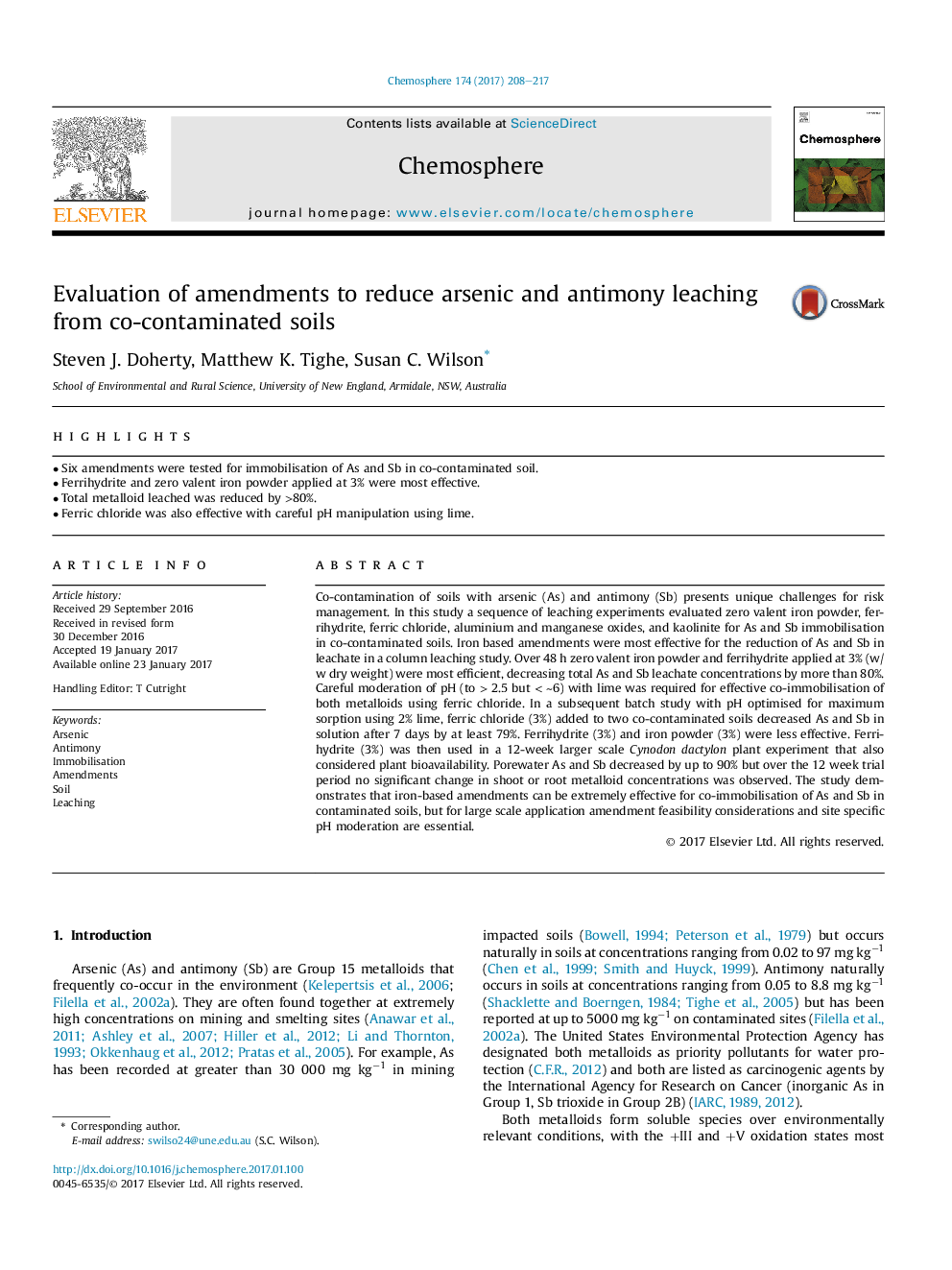| Article ID | Journal | Published Year | Pages | File Type |
|---|---|---|---|---|
| 5747347 | Chemosphere | 2017 | 10 Pages |
Abstract
Co-contamination of soils with arsenic (As) and antimony (Sb) presents unique challenges for risk management. In this study a sequence of leaching experiments evaluated zero valent iron powder, ferrihydrite, ferric chloride, aluminium and manganese oxides, and kaolinite for As and Sb immobilisation in co-contaminated soils. Iron based amendments were most effective for the reduction of As and Sb in leachate in a column leaching study. Over 48 h zero valent iron powder and ferrihydrite applied at 3% (w/w dry weight) were most efficient, decreasing total As and Sb leachate concentrations by more than 80%. Careful moderation of pH (to > 2.5 but < â¼6) with lime was required for effective co-immobilisation of both metalloids using ferric chloride. In a subsequent batch study with pH optimised for maximum sorption using 2% lime, ferric chloride (3%) added to two co-contaminated soils decreased As and Sb in solution after 7 days by at least 79%. Ferrihydrite (3%) and iron powder (3%) were less effective. Ferrihydrite (3%) was then used in a 12-week larger scale Cynodon dactylon plant experiment that also considered plant bioavailability. Porewater As and Sb decreased by up to 90% but over the 12 week trial period no significant change in shoot or root metalloid concentrations was observed. The study demonstrates that iron-based amendments can be extremely effective for co-immobilisation of As and Sb in contaminated soils, but for large scale application amendment feasibility considerations and site specific pH moderation are essential.
Related Topics
Life Sciences
Environmental Science
Environmental Chemistry
Authors
Steven J. Doherty, Matthew K. Tighe, Susan C. Wilson,
